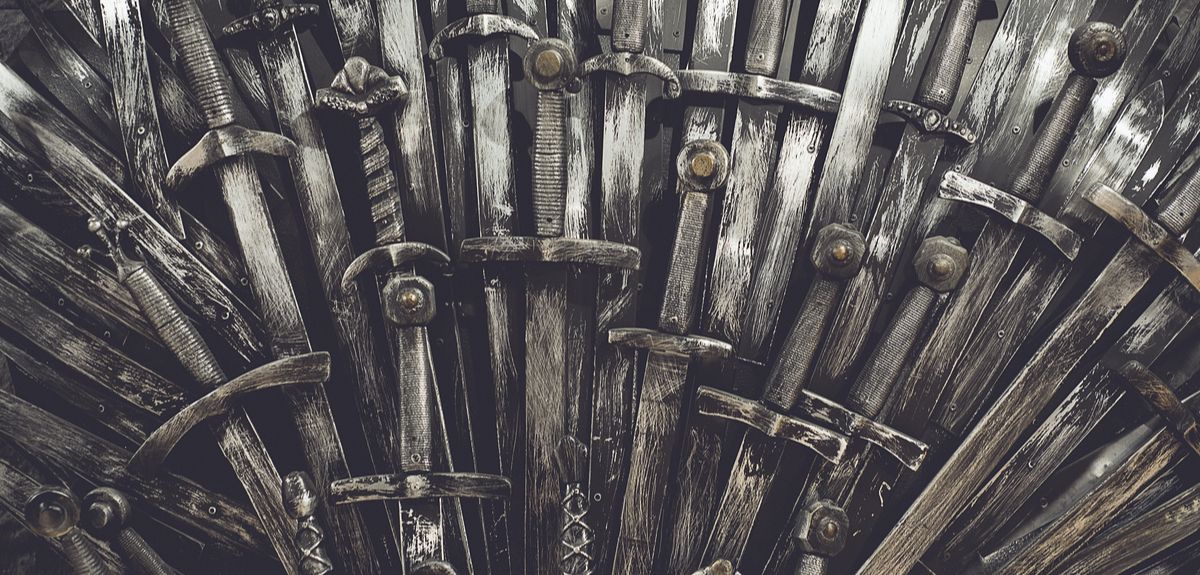
Image credit: Shutterstock
Science reveals secrets behind the success of Game of Thrones
By Robin Dunbar, Emeritus Professor, Department of Experimental Psychology
Writing long novels is a pitfall for the unwary, as many an over-ambitious novelist has found to their cost. It’s very hard to maintain the reader’s interest even through 1000 pages of text, never mind keep this going over a series involving several books. Tolkien, of course, famously achieved it in the Lord of the Rings. And so has the American novelist and screenwriter, George R.R. Martin (once referred to as the American Tolkien) in A Song of Ice and Fire. As one of the most successful fantasy series of all time, it achieved iconic status when it was turned into the astonishingly successful TV series Game of Thrones. It has sold more than 90 million copies worldwide and has been translated into 47 languages.
Just consider the enormity of the task Martin set himself. In the five volumes published so far (we are still waiting for the promised sixth and concluding seventh), three separate main stories, with many subplots, are interwoven over the course of 343 chapters, more than 4000 pages and nearly two million words. There are more than 2000 characters who, between them, engage in over 41,000 interactions, with nearly 300 deaths – all crammed into the space of a mere handful of years of storytime. That’s more than enough to baffle and defeat even a Shakespeare – and Shakespeare was a master at tailoring his plays to suit the psychology of his audience.
The problem lies in the way the human mind has been designed by evolution to cope with the social world in which we typically live. That world is much smaller scale than most people realise. We can, for example, only hold four people in a conversation at the same time (and Shakespeare never breaks this rule onstage). Sixty percent of our social effort is devoted to just 15 core friends and family, and our entire personal social networks (the people we have meaningful relationships with) average just 150.
Yet, like Lord of the Rings, the Fire and Ice stories are gripping despite their size and have an enthusiastic international following. How did George Martin do it?
In a paper published in the Proceedings of the National Academy of Sciences of the USA, a team of physicists, mathematicians and psychologists from Coventry, Warwick, Limerick, Cambridge and Oxford Universities have used network science methods to unpack the secrets behind A Song of Ice and Fire.
It turns out that Martin has very carefully mapped the structure of his storyline to fit the psychology of his readers in two crucial respects. First, the team found remarkable similarities to real life in the way the interactions between the characters are arranged. So much so, in fact, that the sprawling narrative neatly fits into the type of societies for which evolution has designed the human mind. Second, although important characters are famously killed off seemingly at random as the story unfolds, the underlying chronology is not at all unpredictable. Instead, Martin uses the literary device of making each of the chapters an integrated story and then randomly intermingling the stories out of chronological sequence.
Despite the enormous cast of characters and the fact that new characters are added at a constant rate in each of the 343 chapters, the typical number of active characters in each chapter is just 35, about the same as Shakespeare has in each of his plays (and, incidentally, the size that optimises research productivity for English language and literature departments in UK universities). The average number of contacts that each character within a chapter has is stable at between 12-16, about the same number that we would have in our close social circle (our so-called sympathy group).
Each chapter revolves around a central character who provides the “point of view” for the chapter. By virtue of their function as point-of-view characters, of course, these individuals necessarily interact widely, but none of the point-of-view characters has a complete network across the volumes that is significantly above 150. This is the same number as the average human personal social network, known as the Dunbar Number.
In other words, Martin keeps his characters’ networks within the limits that his readers’ human minds were designed by evolution to cope with.
While matching mathematical motifs might, in the hands of a lesser writer, easily have resulted in a rather narrow script, Martin keeps the tale bubbling along by making deaths appear random as the story unfolds, thereby maintaining the suspense for the reader. But, as the team show, when the true chronological sequence of the chapters is reconstructed, the deaths are not random at all: rather, they reflect exactly how non-violent human activities in the real world are typically spaced in time.
Game of Thrones has invited all sorts of comparisons to history and myth. In this respect, the social structure of Game of Thrones is more akin to historical texts that describe real events, such as the Icelandic family sagas, and quite unlike fictional mythological stories like Beowulf or the Irish Táin Bó Cúailnge. Giving the story the characteristic of real life ensures that it stays within the cognitive limits of the reader, thereby making it easier for the reader to track the story without becoming confused. The trick in Game of Thrones, it seems, has been to mix realism and unpredictability in a psychologically engaging manner.
As part of the Coventry University-based Maths Meets Myths Project, the marriage of science and humanities in this paper opens exciting new avenues for comparative literary studies. The computational power of network science has not yet been applied to humanities projects of this kind. Nonetheless, as this project demonstrates it offers the prospect of probing behind the tsunami of detail to provide novel insights into the patterns that underlie stories. As such, it offers a potentially valuable addition to the literary scholar’s analytical toolkit.